Food mixers are an important piece of kitchen equipment - both at home and in commercial kitchens. You can use them to prepare cake mixes and creams, but also when making pancakes, whipping egg whites or even kneading pizza dough. Which mixer will meet all your expectations?

Food mixers are an important piece of kitchen equipment – both at home and in commercial kitchens. You can use them to prepare cake mixes and creams, but also when making pancakes, whipping egg whites or even kneading pizza dough. Which mixer will meet all your expectations?
Types of mixers
Which mixer should you choose? In order to make a choice you will first of all need to know how you intend to use it – e.g. for making desserts, or maybe preparing traditional pastry dishes. Searching for the perfect mixer, you will come across different types – some intended for commercial use, others as basic equipment in any home kitchen. Check what your options are!
Hand mixers
A hand mixer is something you probably know very well. There are numerous reasons that this is the most popular type of mixer – among others it’s inexpensive, easy to use, and great for mixing and whipping. A specific type of hand mixers are bowl mixers, which will make your job easier when preparing dishes and desserts.
Planetary mixers
Increasingly popular for home use, planetary mixers feature an agitator that moves around the bowl like a planet, hence the name. They are very universal in use and with the appropriate attachments you can change their functionality to include blending, chopping, squeezing citrus fruits and even grinding meat.
Spiral mixers
This type of commercial equipment is rarely used at home. They are used for mixing and kneading a large amount of dough, e.g. for preparing dumplings, pizza, bread or various types of noodles, and are therefore most often used in commercial kitchens.
What should you pay attention to when choosing a food mixer for home use?
Which hand blender should you buy if you cook for the whole family? Which parameters are most important in everyday use?
- Power output – hand mixers are used mainly for less demanding tasks, such as mixing and whipping – models with approx. 250 watts of power should be sufficient. Will you occasionally use it for mixing heavier, more dense masses, e.g. yeast dough? If so, then you should go for at least 400 watts.
- Weight – as the name suggests, a hand mixer is used by holding it in your hand, so it should be relatively light, with long-lasting use in mind. However, make sure that the lighter weight does not go hand-in-hand with lower power.
- Rotation speed – there are several levels of the operating speed – they are usually changed in steps, although smooth regulation is also possible. Turbo mode is another feature worth looking for – it makes it easier to quickly reach full power.
- Types of attachments – most often, only standard attachments for mixing and whipping are supplied as basic accessories, although you will sometimes also find dough hooks for kneading.
Which mixer should you choose for more than just mixing and whipping, and if the basic attachments are not sufficient? In such cases, a planetary mixer would be a good idea, following the same tips when choosing one as in the case of a hand mixer. In addition, however, also consider some other functions. What should a planetary mixer have additionally?
- Blending – for making cream soups and delicious smoothies.
- Chopping – forget about manually cutting vegetables or meat.
- Meat grinding – gain access to fresh, high-quality ground meat whenever needed.
- Grating – the coffee grinding attachment will also work well on nuts or herbs.
- Squeezing – orange or grapefruit juice? With the right attachments you can do many different jobs!
- Making pasta – a planetary mixer will help you roll and cut out your favourite shapes.
In addition to the attachments, it is also worth mentioning a few other useful features of certain models. A built-in scale will make it easier to measure the required amount of ingredients, and the bowl heating mode will let you melt butter or help yeast dough rise.
 Stand Mixer – orbital stirring system | 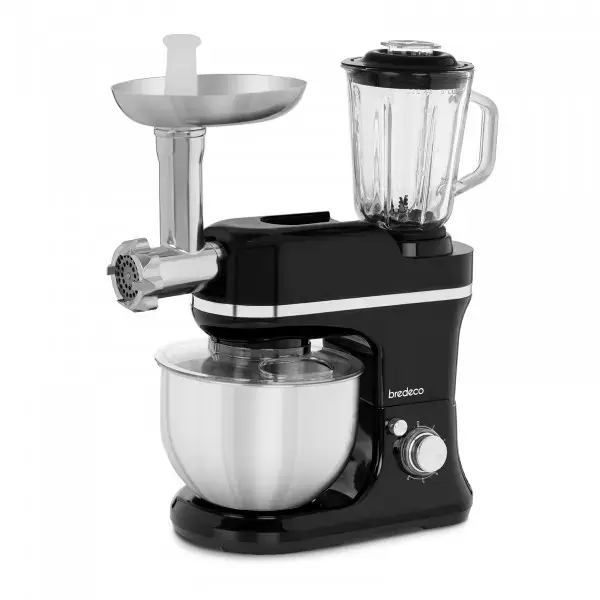 Stand Mixer – incl. blender & meat grinder | 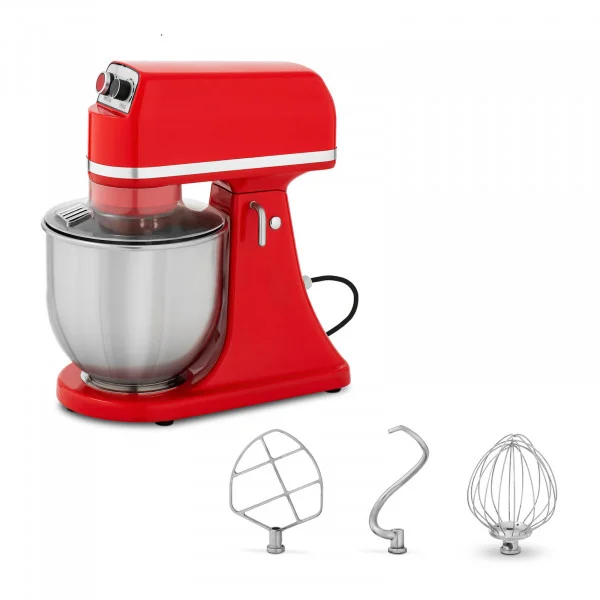 Stand Mixer – Royal Catering | |
| Output | 1200 W | 1200 W | 350 W |
| Voltage | 230 V | 230 V | 230 V |
| Capacity, bowl | 5.0 L / 1.5 kg | 5.0 L / 1.5 kg | 7 l |
| Diameter, bowl Height, bowl | Ø23 x 18 cm | Ø23 x 18 cm | Ø22 |
| Protective cover | Yes | Yes | Yes |
| Dimensions (LxWxH) | 39,00 x 23,00 x 31,50 cm | 47,00 x 23,00 x 55,50 cm | 39,00 x 23,00 x 45,00 |
| Incl. accessories | Dough hook Flat beater Whisk | Dough hook Flat beater Whisk Blender jar with lid and measuring cup Meat grinder accessories 3 sausage accessories (3 mm, 5 mm, 7 mm) Sausage and pasta set (8 pcs.) Pusher | Dough hook Flat beater Whisk |
With or without a bowl?
Which bowl mixer should you buy? The choice is yours, because each planetary mixer is equipped with a container, while hand mixers can usually be used with or without a bowl.
Do mixers with a bowl make sense? Absolutely yes! If you make dough that requires extensive mixing and frequently adding additional ingredients, it will be much easier with such kitchen equipment. You will not have to turn off the mixer and put it aside each time you want to add flour or sugar – the machine will take care of this, and you can concentrate on your other duties.
Does this option have any disadvantages? Not really – everything is done automatically, so you can do other jobs at the same time. Bear in mind, however, that a mixer with a bowl will take up more space than a regular handheld model, so it might not be the best option if you have a very small kitchen.
Necessary mixers for restaurants
When buying the necessary equipment for a restaurant, there are many different aspects you should keep in mind. If you have a cafe and you serve breakfast, pancake and waffle makers should be high on your list. Choosing the right mixer is another challenge – so which one should you buy?
Small hand mixers, as well as more advanced planetary mixers, will come in handy for small jobs both at home and in commercial kitchens. However, if you prepare food for hundreds of people a day, you will need equipment that can cope with tougher jobs.
This is where an ultra-efficient spiral mixer will be perfect, letting you effortlessly prepare huge amounts of dough needed to make a wide variety of dishes. Do you run a pizzeria? If so, such equipment could be a life saver, as you will no longer have to spend endless amounts of time kneading each batch of dough by hand. Or maybe you serve other dough-based food? In any case, it will make kneading dough much quicker and easier. What’s more, with a spiral mixer you can even prepare your own bread, which could be a very attractive addition to your restaurant menu.
Which mixer will be best for commercial use? First of all, pay attention to its capacity. You will find both small, 7-litre spiral mixers and huge 40-litre models, in which you can knead dough with up to 16 kg of flour! Using this type of equipment is very simple, but you will need to know basic health and safety rules.
Which food mixer should you buy – summary
You’ll never have to wonder how to make pancakes without a mixer again. Equipped with a food mixer you will be able to make all sorts of homemade cakes, delicious meringues or perfectly-whipped cream. You should opt for a planetary mixer if you spend a lot of time in the kitchen and are looking for a solution that will speed up the cooking process without affecting the quality. If, on the other hand, you are planning to set up your own restaurant, why not consider buying a spiral mixer, which will make your kitchen staff’s job much easier and more efficient.

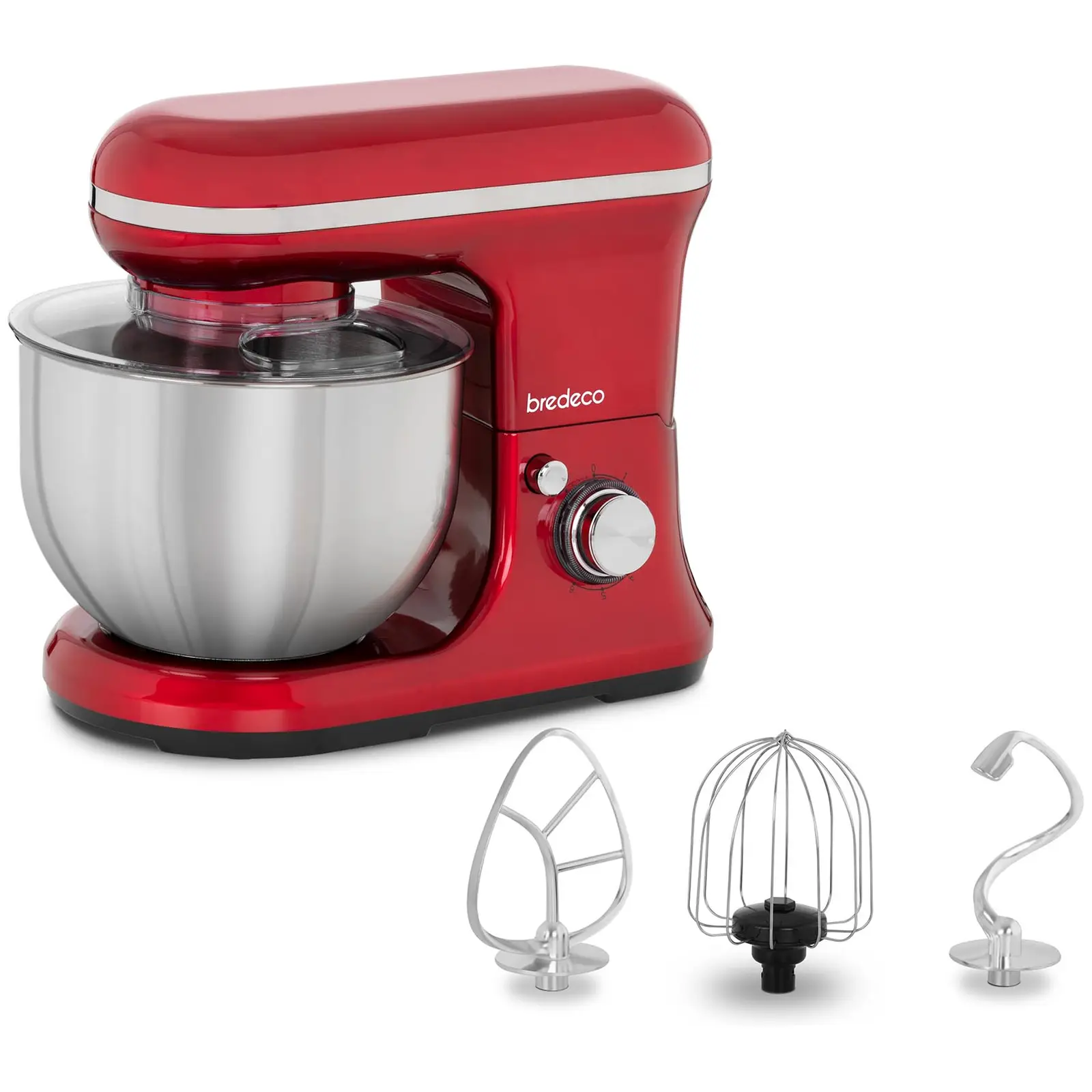
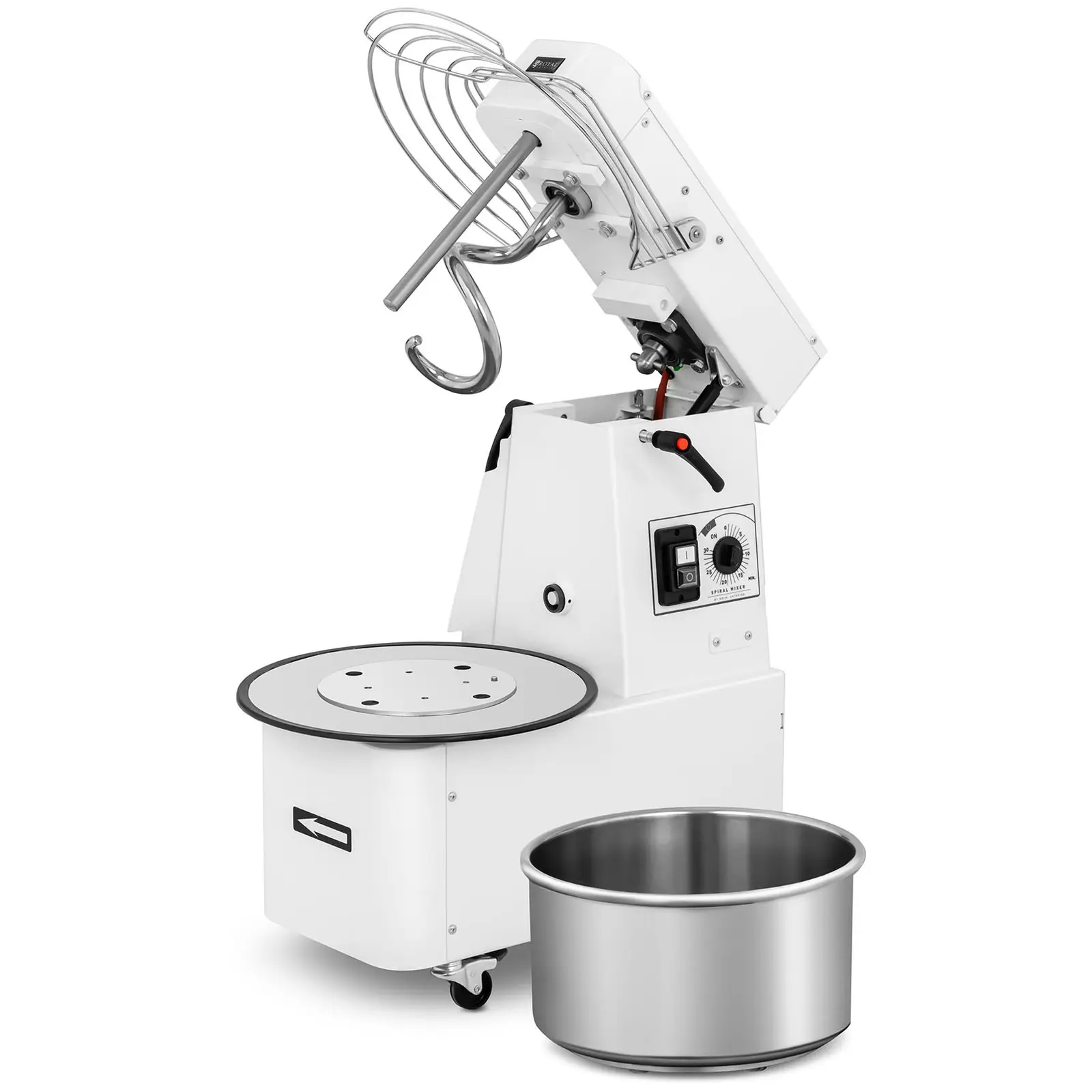
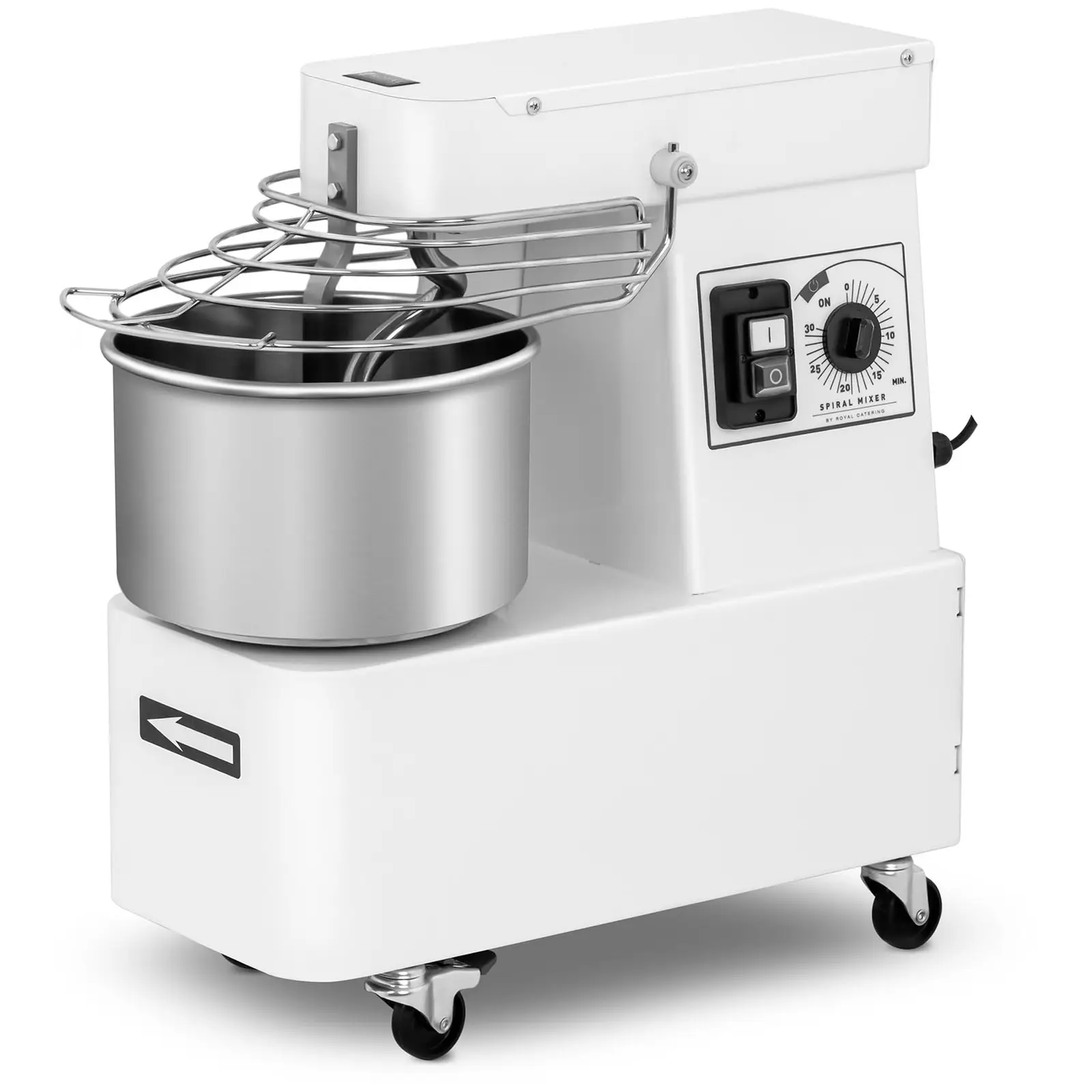
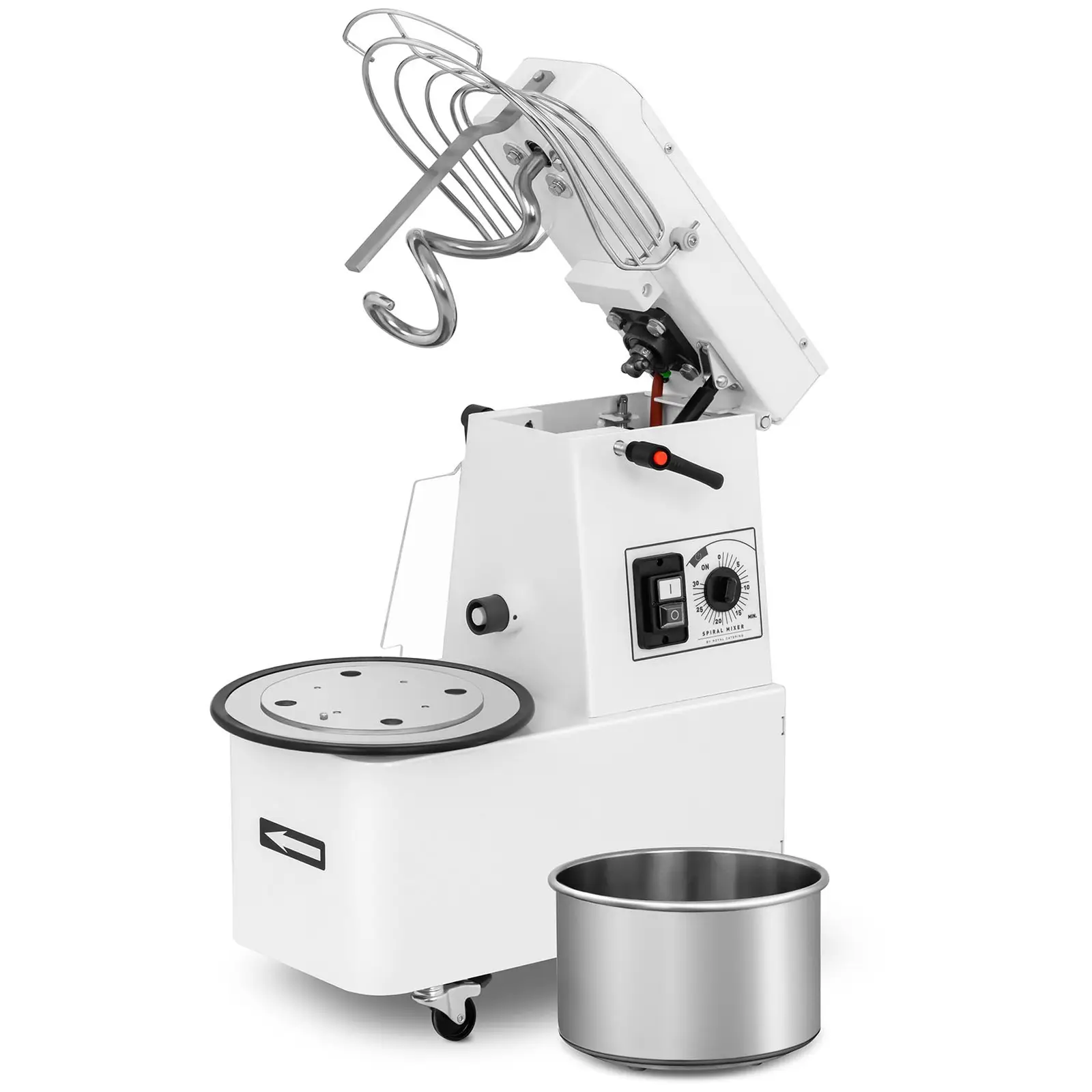
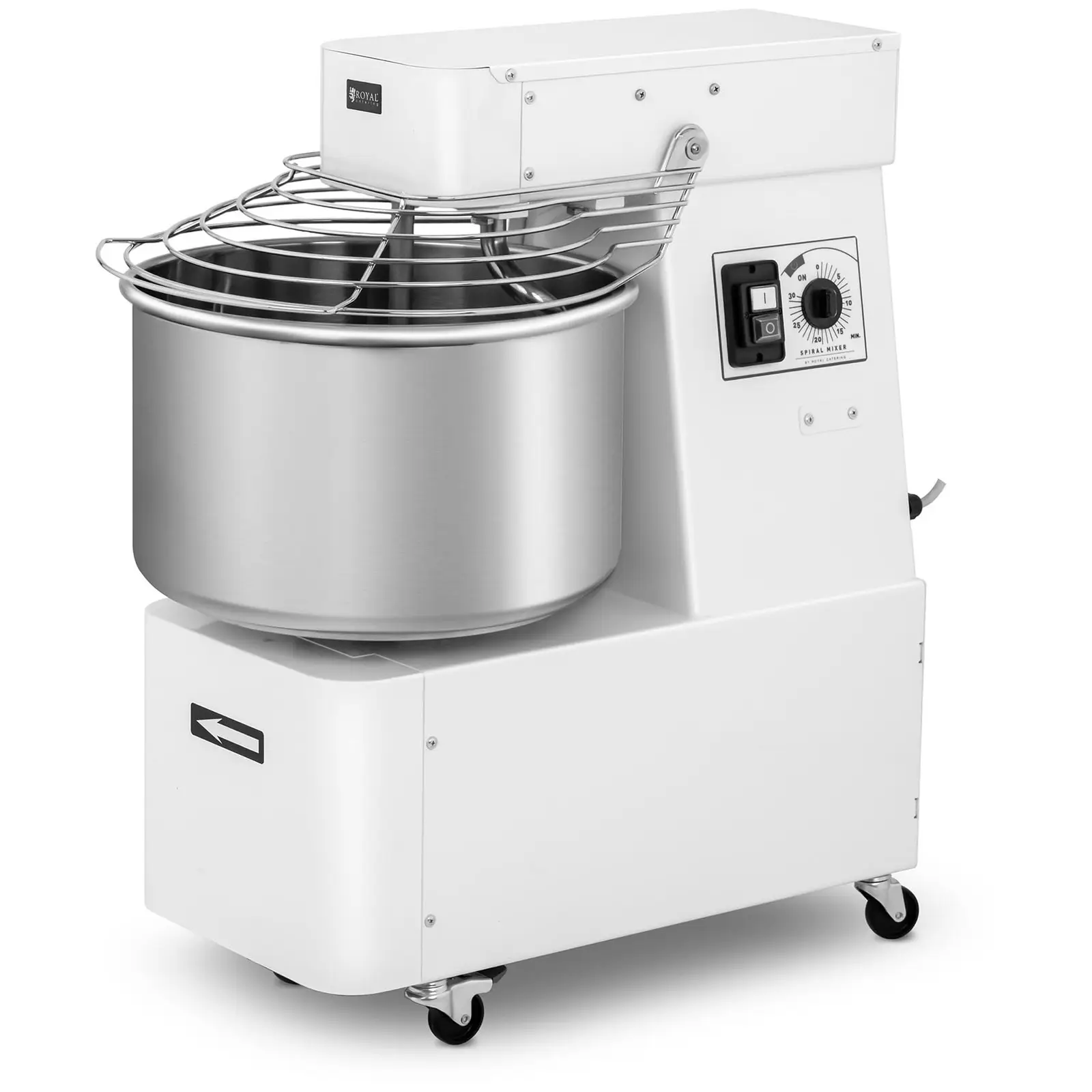
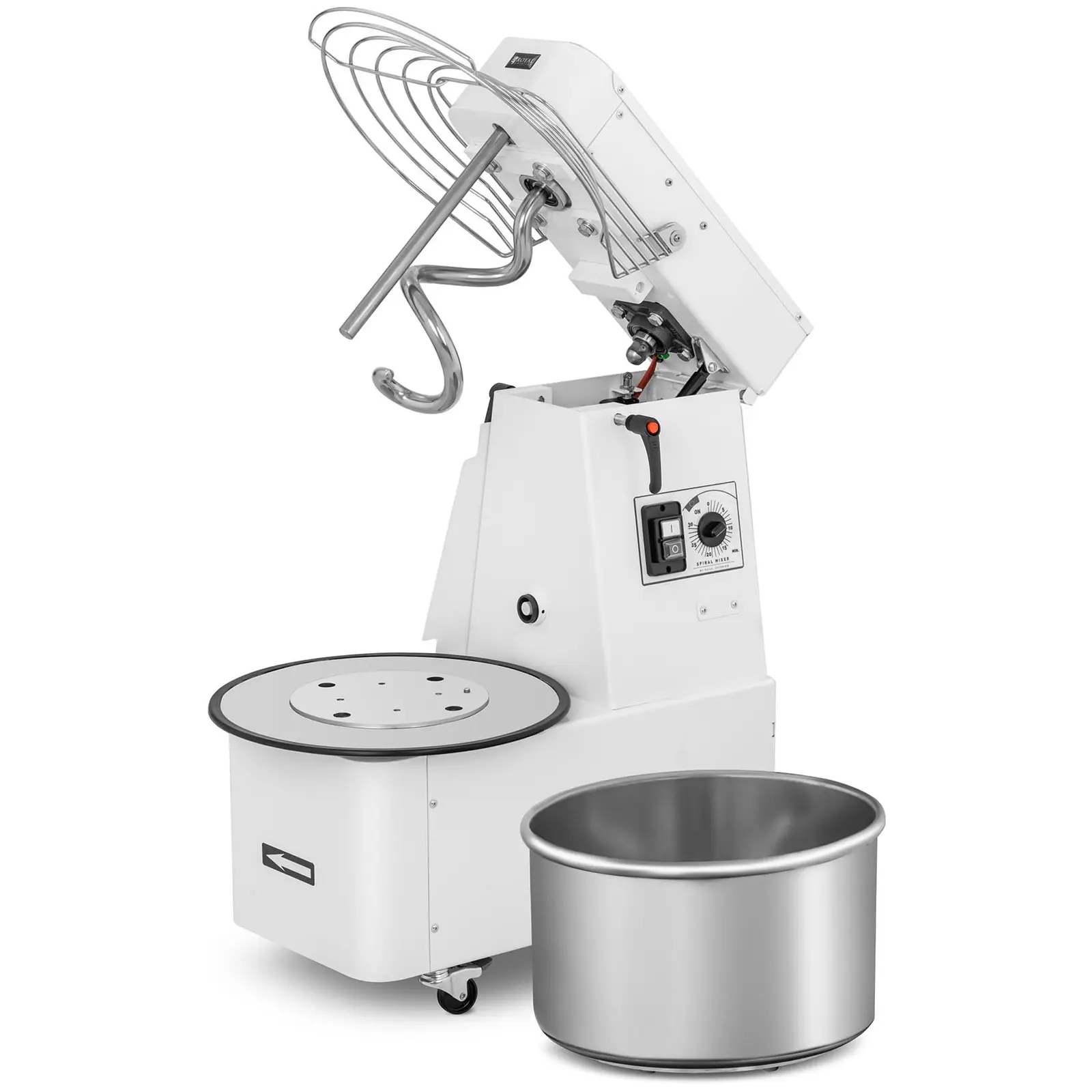
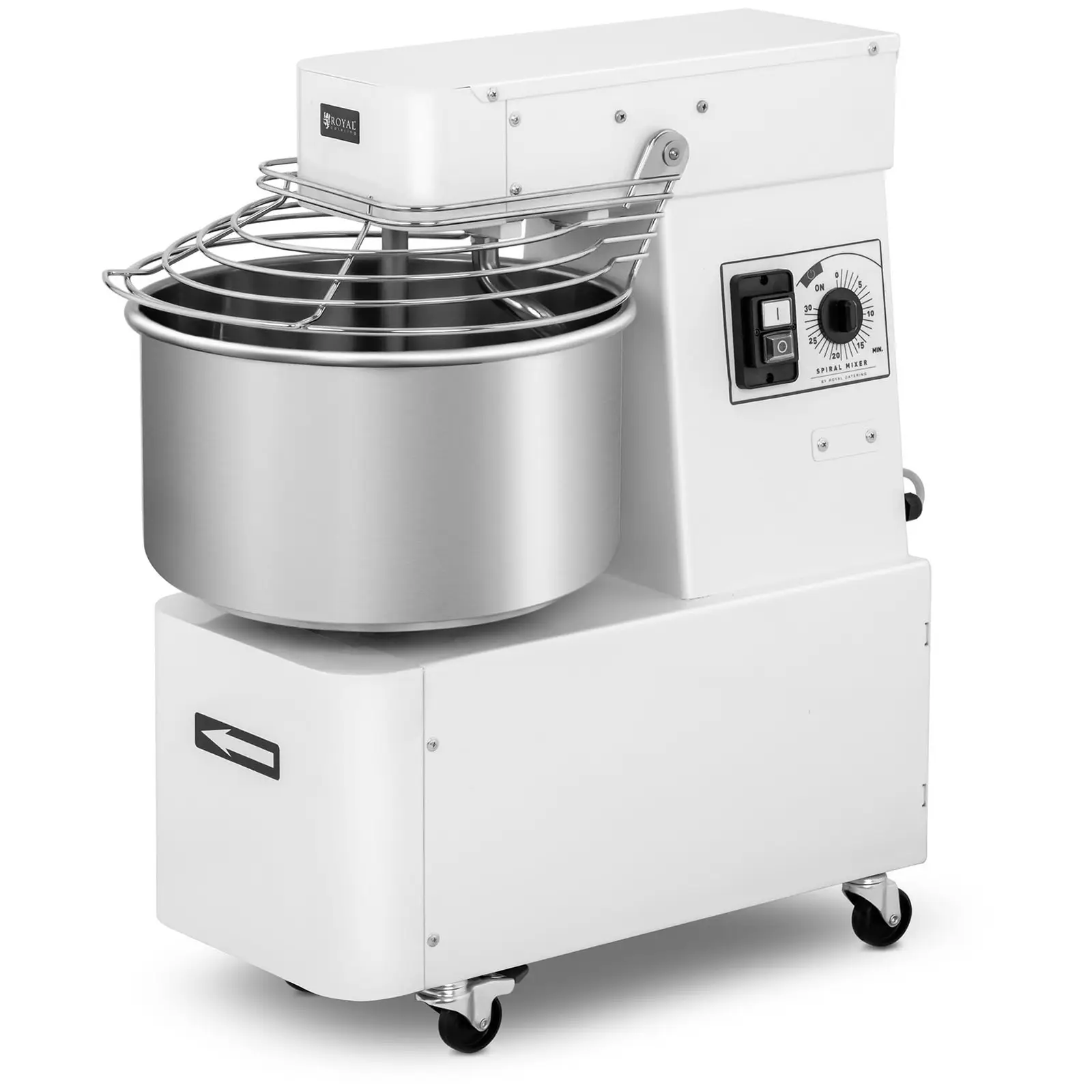
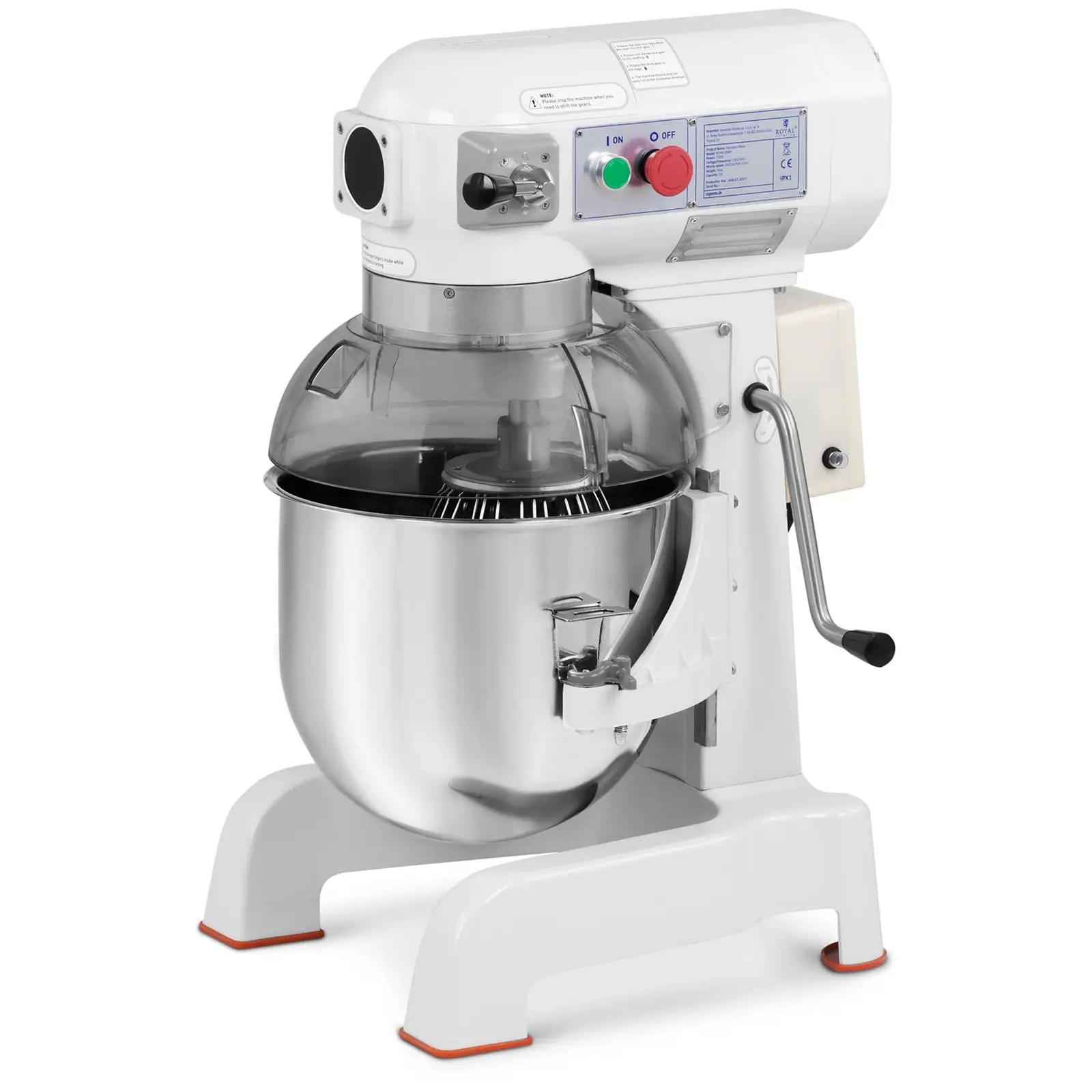
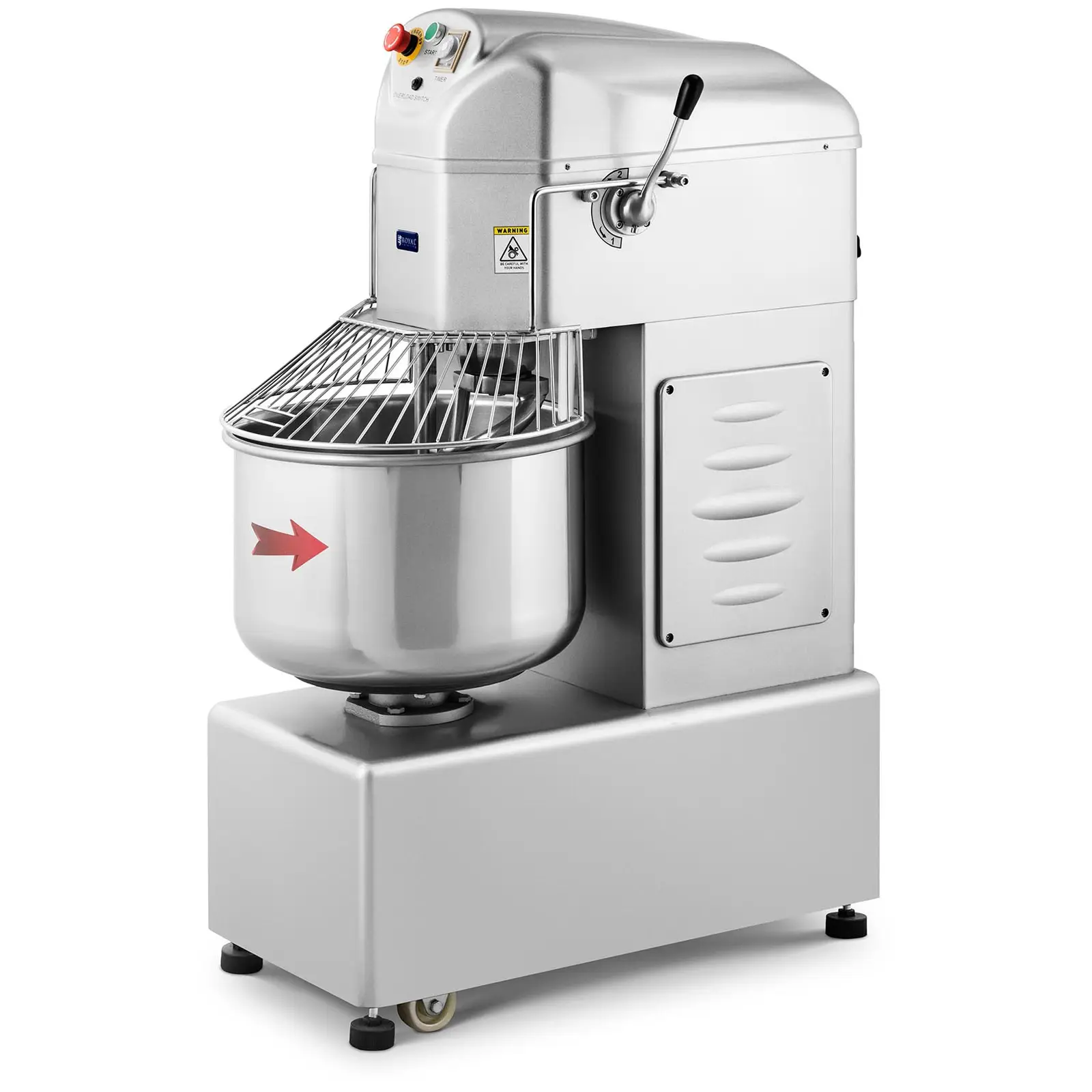



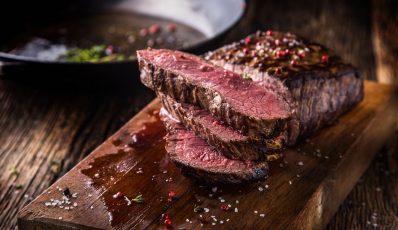


Share